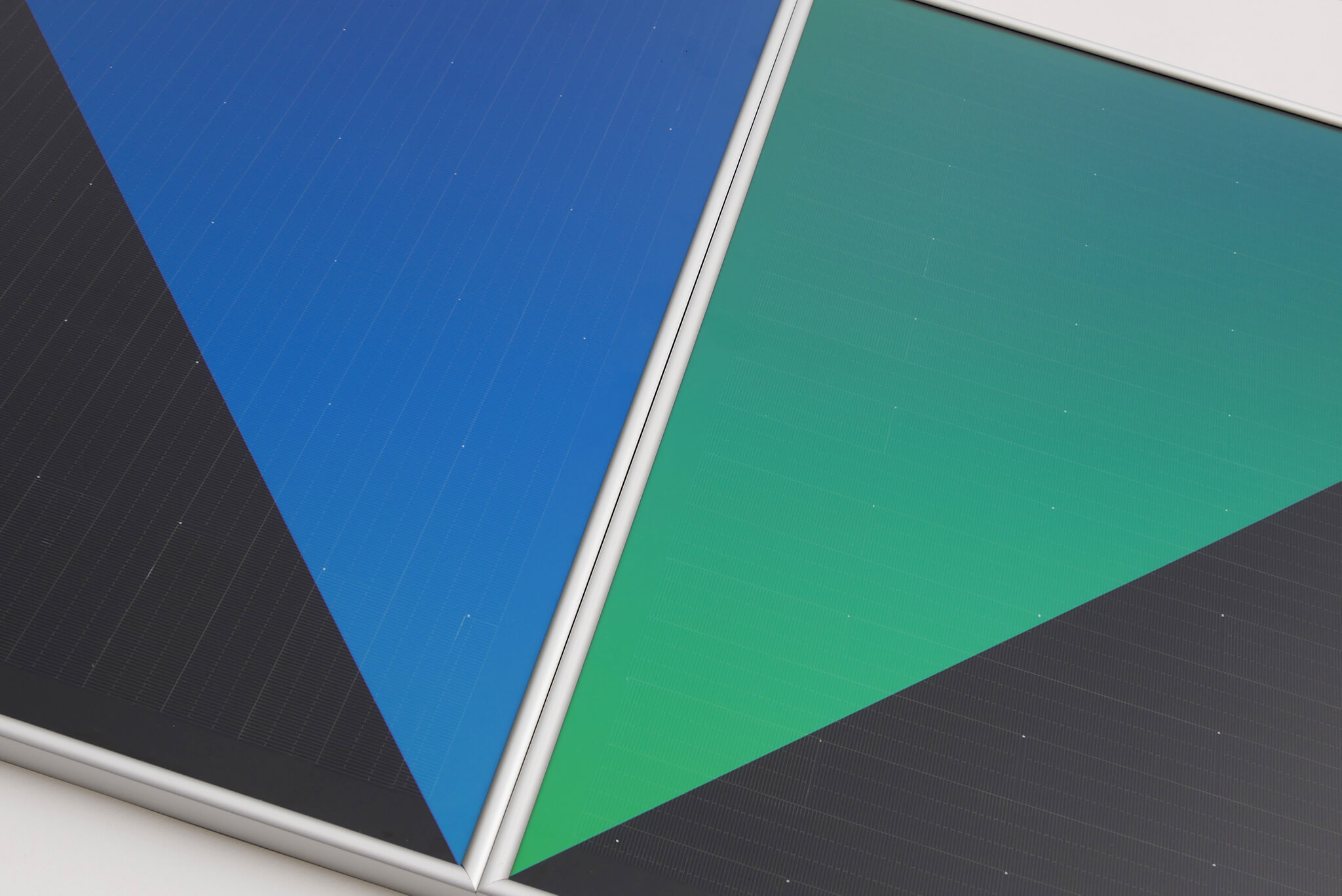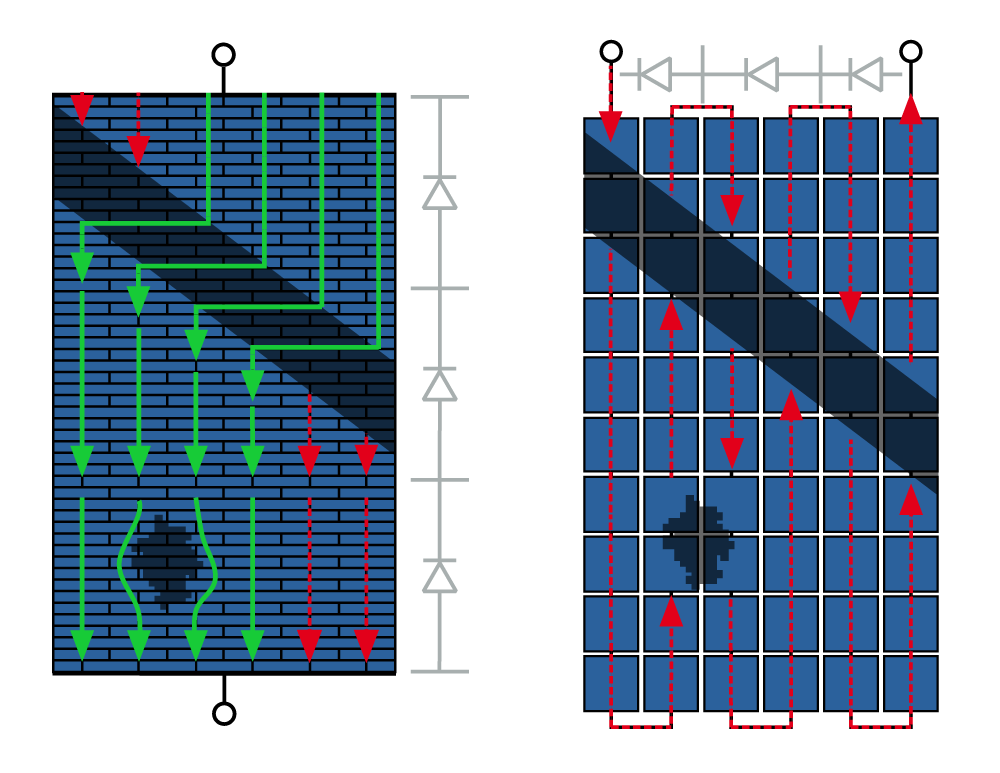| Duration: | 11/2019 -10/2022 |
| Contracting Authority/ Sponsors: | Bundesministerium für Wirtschaft und Energie (BMWi) |
| Project Partners: | M10 Industries AG; Polytec PT GmbH; TRUMPF Hüttinger GmbH + Co. KG; Aleo Solar GmbH; Solarwatt GmbH |
| Project Focus: |
Shirkan – Matrix Shingle PV Module – robust, cost-effective, aesthetic and highly efficient


In the project “Shirkan” Fraunhofer ISE, together with its industrial partners, is developing the matrix technology. Here, we interconnect the shingle solar cells on the long cell side by a small overlap and laterally with an offset to each other, as in a masonry structure. This arrangement ensures the avoidance of inactive areas within the cell matrix, a uniform appearance and maximum area utilization.
In the project, we are optimizing various module concepts. In addition, a stringer is being developed that will achieve a maximum throughput of approx. 12000 shingle solar cells per hour in industrial production. First results of the shading behavior of a matrix shingle module show that - compared to a classical string shingle interconnection - between 70% and 95% more power is generated, depending on the scenario. This is especially true in the case of diagonal shading, e. g. by a chimney or a pile, and randomly distributed small-scale shading, e. g. by tree leaves. Simultaneous parallel and series connection of the solar cells allows the current to flow around the shaded area.
For industrial implementation, a reliable high-throughput shingle platform, a conductive adhesive and a novel curing process are being developed. In addition, the thermomechanical behavior of the joint and the long-term stability will be scientifically analyzed. The high potential of this interconnection topology will be demonstrated by designing and building the world's first full-format module with a cell-to-module efficiency loss of 0% (CTMη 100). Various designs of the applied cell matrix will demonstrate application in building-integrated photovoltaics.
The objectives in detail are:
- Development of a machine platform for matrix interconnection of shingle solar cells with a throughput of 12,000 shingle solar cells per hour and a precision for laser cutting of ± 25 µm/4σ and a deposition precision of ± 100 µm/3 σ with a cell overlap of < 1 mm.
- Development of a low-damage laser process for cell division
- Development of a conductive adhesive for the matrix interconnection of the shingle solar cells
- Development of an associated process technology for curing of the conductive adhesive
- Detailed analysis of the thermomechanical behavior of the joining area
- Construction of full-format PV modules (60-cell equivalent) with no inactive area within the cell matrix, exhibiting 0% cell-to-module efficiency loss (CTMη 100) and increasing module efficiency by > 1.5% compared to standard PV modules.
- Development of design rules for BIPV modules and build prototypes with attractive patterns and colored and transparent EVA/backsheet.
- Reliability tests (power loss < 5% according to TC and DH from IEC 61215) of the novel matrix interconnection topology.